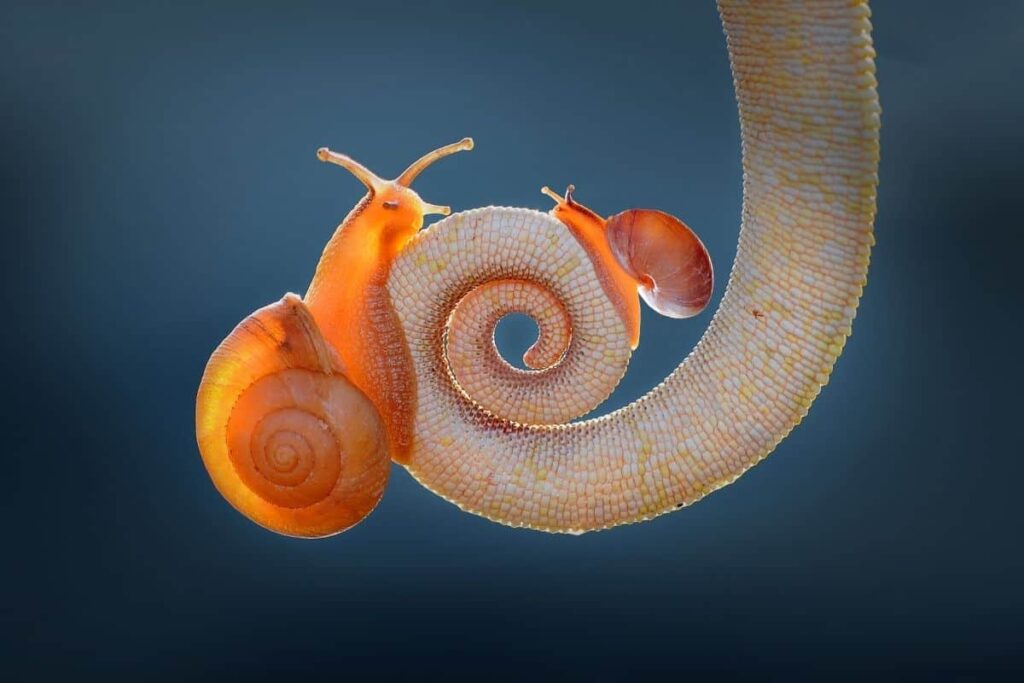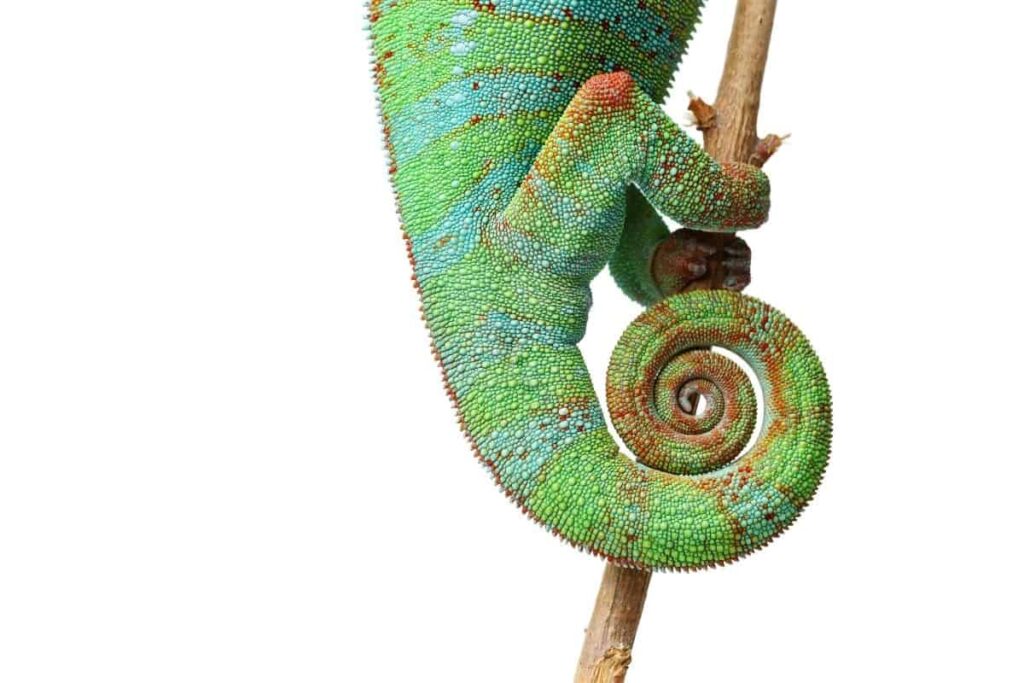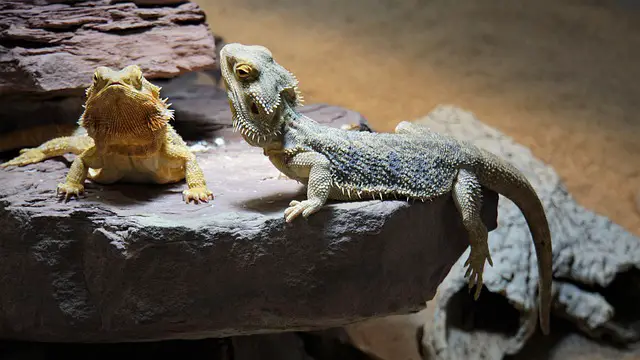Chameleons are incredibly well-known for having a super long tongue that shoots out of their mouth and whose stickiness catches prey.
It’s pretty obvious why their tongue is as long as it is but what about the other end of the animal?
Here, you will find a long, often curled-up tail that a lot of people think is incredibly cute.
And they’re right, a chameleon‘s tail is certainly one of its most attractive features but it also serves a functional purpose.
The reason that chameleons have long tails is primarily to help them move through the trees with greater balance and flexibility.
However, there are other reasons that these animals have such long and interesting tails; so let’s find out more!
Why Are Chameleon Tails So Long?
Chameleons are an arboreal species which means that they spend the majority of their lives in the trees, among the branches.
They likely wouldn’t do very well on the forest floor so it is essential that their physiology allows them to remain safely above ground, where they can hunt and thrive.
One of the ways that chameleons achieve this is by using their long tails to keep them balanced. They can use them to grab onto things as they move.
For example, when moving from tree to tree, the chameleon would wrap its tail around a branch to retain balance and move smoothly.

Not only this, but it allows them to secure a position without the risk of falling.
In addition to this, the chameleon also has very unique feet.
Each foot has two sets of toes; there will usually be either two or three toes per set and these allow the animal to securely grab onto the branch underfoot.
Coupled with their long tails, this is a viable way of staying balanced in the trees.
Curling The Tail
One of the other reasons that a cham’s tail is long is because they need to be able to curl it.
When you look at a chameleon, you may notice that its tail is curled for a lot of the time. Not only is this for practical reasons but it also allows the animal to communicate how it is feeling.
Quite often, the male chameleon will curl its tail to show aggression, particularly when it is about to fight with another male.
They do this along with other signs such as rocking their bodies and making a hissing sound. You may also notice that an aggressive chameleon alters its colors.
Of course, this is something that they do to show a variety of emotions and to camouflage; one of their most notable traits.
Your chameleon may also curl its tail when it is feeling stressed or upset. For pet chameleons, the tail will usually be straight so if you notice it is curled, it might be worth investigating reasons why your chameleon is feeling a little agitated.

There are many different species of chameleon and some are much larger than others. The smallest chameleon doesn’t even measure an inch in length whereas the biggest species can grow up to a whopping 30 inches!
But at either end of the scale, there may be times that the chameleon needs to look much smaller than it is and that is where its wonderful curling tail comes into play once again.
They will generally do this when they are sleeping since they are much more vulnerable to predators during this time. When the tail is curled, the animal looks smaller and therefore, more likely to go unnoticed by a predator.
Finally, a curled tail can also help with balance. Much like using the tail to grab onto things, curling it while the animal is resting will allow it to remain in the tree.
Chameleon Tail Problems
With the tail being such a large part of the chameleon’s body, it will come as no surprise that it is more susceptible to injury. It is not at all uncommon to see a chameleon with an injured tail and this may affect the animal’s ability to curl it.
For the most part, this won’t be hugely problematic and the issue will normally rectify itself. However, if you do notice that your cham’s tail isn’t healing or functioning as it should over a long period of time then it is a wise idea to have him seen by a vet.
It is entirely possible for a chameleon to lose its tail and not die. This is a trait that is seen in several reptiles and while it may have an impact on the chameleon’s mobility, it certainly isn’t a problem that will last for long.

Whether a chameleon has its tail cut off or experiences a traumatic accident, the tail will regrow over time. Generally speaking, this will take around 60 days.
This fascinating process occurs because of the unique DNA found in the tail which is only activated when part or all of the appendage is lost.
Conclusion
Chameleons have some incredibly unique features which are what makes them one of the most popular exotic pets out there. One such example of this is their long tails.
But these aren’t just for display; the chameleon uses its tail to keep safe in the trees when moving around as it provides them with something to use as a grip.
Moreover, the tail can be used for balance when moving and when static, the animal will curl the tail to prevent it from falling out of the tree!
Chameleon tails are prone to injury because of their length. But since these amazing animals have the ability to regrow their tail, the worst that will ever happen is that their balance is thrown out while they are in recovery.
- Do Black Caiman Live in Groups? Exploring the Social Behavior of These Large Reptiles
- Do Black Caiman Have Predators? Exploring the Threats to This Amazonian Reptile
- Do Black Caiman Eat Toucans? Exploring the Diet of Black Caimans in the Wild
- Do Black Caiman Eat Sloths? The Truth About the Diet of Black Caiman
- Can a Black Caiman Kill a Human? Exploring the Predator’s Potentially Deadly Bite




